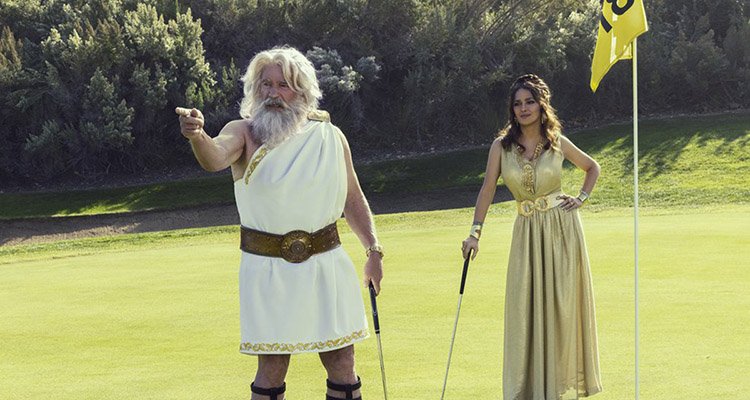Written by: Joe Belliotti
What’s the secret behind great sync matches? Here’s a comprehensive look at the ‘Music Select Methodology (MSM)’ by Joe Belliotti of MassiveMusic North America.
As with marketing and advertising, selecting music in advertising is both an art and a science. While art preferences are subjective — we all have our favorite songs, artists and memories associated with them — the scientific, objective dimension of music selection is not well understood.
“Brands with sound that fits their brand identity are 96% more likely to be recalled than those with non-fit music or no music at all,” according to the University of Leicester. Going beyond subjective opinion and taste, strategic music selection must pick the most effective and impactful content.
Whether you are a brand marketer, agency creative, artist, record label, or publisher pitching music for ads, this guide will ensure you pick the most suitable music for the brand, story, and audience.
Agency creatives, often with the help of music experts, make the vast majority of a brand’s music decisions, as they are the stewards of the story the brand tells through a particular piece of content.
Yet most artists, labels, and publishers think in terms of “this song (or this artist) is perfect for the brand,” rather than, “does this song tell a compelling story? Will this song resonate with my intended audience?” Therein lies the methodology.
Right for the Brand, Right for the Story, Right for the Audience
The ability to balance both the artistic and scientific elements will enable music selections that drive a powerful narrative, while at the same time building the brand personality in the hearts and minds of audiences.
Music not only attracts an audience to great creative. It also helps artists go beyond paid or brand-owned channels and find their way into the music and pop culture conversation.
What is a brand anyway? For purposes of this methodology, brand will mean consumer brands, film, TV series, video games, events, and sports franchises.
What do each of these mean and how do you balance these in music selection?
Right for the Brand
Every brand has a personality. If we really peel back the layers, a brand exists in our minds as an abstract web of associations. For example, our own memories and marketing formed a unique perception of Coca-Cola, despite the product being nothing more than a sparkling beverage.
Terms that aid in articulating brand personality help to express these perceptions. Our company, MassiveMusic, created a tech tool called MassiveBass, described as the world’s first data-driven sonic branding tool that matches your brand archetype and values to music. Tools like this help brand owners think in terms of their brand through music and sound, while providing consumer insights into what a sound communicates.
Thomas Marzano, Former Global Head of Brand Experience at Philips, comments: “We asked MassiveMusic to translate the Philips brand into a new, simple set of audio assets. But together, we have in fact transformed the sonic brand identity across-the-board, which will radically change our brand recognition and help continue to put our consumers’ experience at the core of the business.”
My personal interpretation of the sound of ‘optimism’ may differ from yours. Having a large audience pool helps find what will resonate best across audiences. A brand built on innovation and discovery reinforces that point of view in music selections; so, rather than license a classic 80s hit, the path would be to introduce new songs and new talent through advertising. Conversely, a brand built on classic nostalgia should not look to confuse consumers by breaking the hottest new track in their ads.
In addition to these brand personality traits, the more data points we have available, the more informed our selections become.
Even when a song matches the more personality-driven, subjective criteria, there are some practical questions that MUST be raised. Having connections in the music industry enables a brand or creative to make better decisions and effectively secure the rights for music.
These questions include:
- Does the artist love the brand? Even though you may have the ability to license a song, the artist being proud of the association is advantageous. An artist’s endorsement helps prevent future negative backlash; if the ad becomes insanely popular and the press asks the artist their opinion, you do not want the artist to speak unenthusiastically, or even disparagingly, about the brand.
- The issue of compliance obligation arises. In some cases, usually involving older catalog songs in which a publisher controls the copyright, a label controls the recording and neither party is obligated to get outside approval or to notify the singer. Use of the singer’s voice in a commercial implies endorsement, and if not clarified, causes brand issues.
- Can we afford it? Using an iconic or popular song is great, but not every campaign has the budget for The Beatles’ music. Affording the song also necessitates being a smart buyer. Do not compromise on the usage rights you need — this spells disaster when you need to expand the media or lengthen the term.
- What is the song’s history? Some songs may have never been used in advertising and some songs and artists — think Queen — have been used everywhere! To know the commercial history, one must ask: has a song been used by a competitor in your brand’s category? Or, is the song being considered by another brand outside your category? If you run into a situation in which a brand is concurrently using the same song, there may be no recourse if the license permits this.
- While we have spent most of the focus on the strategic and creative selection, we should also note that securing the rights to music impacts selection. A brand could find the perfect song that perfectly tells the story of their commercial and appeals to their target consumer, but the cost for the usage rights are either out of budget or require a compromise. Compromising the rights to fit your budget is never recommended.. What if the campaign is extremely successful and extends into new media, new markets, or beyond the term length? Did you pre-negotiate options? Have you considered relatively new platforms such as TikTok? Brands find issues interpreting the use of content created by influencers who utilize music. Consider the potential life of the content over time and across media.
Right for the Story
This part of the methodology involves matching the feelings evoked from the audio to the feelings evoked from the visuals and dialogue. The lyric or lyrical theme, mood, and tempo all come into play to support the narrative of the script. The goal may aim to precisely match the sonic and visual moods, or it may strive to alter the viewers’ perception through the purposeful use of music.
Lyrics play a key role. Most people initially identify with lyrics and feel the intent and message of a song through the lyrics. So, finding keywords and lyrical themes are key.
Keywords are more direct. If I have a script, scene, or story about ‘strength’, I would look at songs such as Kelly Clarkson’s “Stronger.”
One should not stop at keywords though, as lyrical themes uncover powerful music choices as well. For example, we have a story of ‘empowerment.’ If we only searched for songs with the keyword “empower” we would miss Clarkson’s “Stronger.” So, by looking at the lyrical theme we find “Stronger,” the ultimate song of empowerment.
Layer in the consideration of the song’s mood. Even if I do not track the lyrics, sometimes there is dialogue in a scene or the mix is low; so, the mood of the music helps deliver the mood of the story. The tempo of the song moves the story along, keeps the audience engaged, and tracks with each second, each beat, and each pulse.
At MassiveMusic we use this example in our Sonic Inspiration Sessions to show brands how sound directly impacts and completely changes audience perception. The music has the power to set — and dramatically change — the intended mood and narrative.
Right for the Audience
I have seen brands who look to connect with a younger audience use songs from the 60s or 70s. Even though the lyrics might reinforce the storyline, the brand is not conveying the message that they are a brand “for someone like them” through their music selection.
Audiences Demographics and Psychographics
Demographics inform us of the audience profile and the popularity of certain tracks. Sometimes, I look for a direct match of the brand audience to the song’s audience. It is not always about connecting with a brand’s current audience, but rather to attract a new audience.
Psychographics bring us even closer to the audience by providing very useful and insightful information about their lifestyle, interests, hobbies and values. For example, a brand such as REI, The North Face or Patagonia appeals to outdoor enthusiasts. With the right data sets we find the perfect artist or song that appeals to outdoor enthusiasts to ensure the music matches the audience’s passions.
Examples of who is doing it well…
Apple: When asking brand marketers which companies they see winning with music, Apple typically comes up. Apple’s use of music consistently rendered their advertising innovative, fresh, and culturally relevant. The public took notice of the silhouette ad series and the brand introduced new music from various artists to the world.
Coca-Cola: Historically, Coca-Cola shaped culture by teaching the world to sing or enlisting ARTISTS to create songs around their new tagline, “things go better with Coke.”
Conclusion
Selecting music is an art and a science. Despite the subjectivity of music taste, in order to drive narratives and grow brands, we must make calculated choices. Today, the increasing access to data and insights fuels the scientific facet of music selection, informing our creative choices.
Using this methodology of ‘Right for the Brand,’ ‘Right for the Story,’ and ‘Right for the Audience,’ we provide a framework that guides selections to maximize strategic fit, creative resonance, and optimal effectiveness for pairing music with content.
Source: Digital Music News







